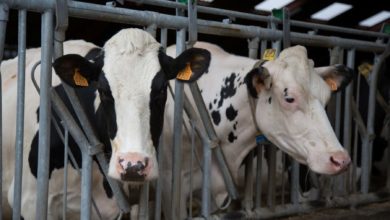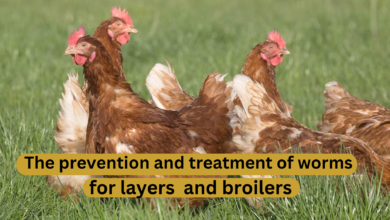5 Ways To Dip Your Cattle Against Tick-borne Disease | Prevention Measures Against Tick-borne diseases: Read Now

Host
Global Animal Health
Target Audience
Cattle Farmers
Program Overview
Ways To Dip Your Cattle Against Tick-borne Disease | Prevention Measures Against Tick-borne diseases. Tick-borne diseases are transmitted through the bite of an infected tick. These include Lyme disease, anaplasmosis, ehrlichiosis, babesiosis, powassan (POW), Rocky Mountain spotted fever, and tularemia. Ticks can become infected with bacteria, viruses, or parasites.
Similar favorable climatic conditions for cattle support large populations of ticks and enable transmission of the four major tick-borne diseases (TBDs).
Other tick-borne diseases such as babesiosis (Sabesia bigemina), anaplasma marginale, heart effusion (Cowdria ruminantiwn) and Theileriaparva bovis have also been effectively controlled and eradicated in some areas.
ALSO READ: 6 Approved Common Pig Diseases For | Piglets, Boars And Sows| And Management Strategies
Here are 5 tick-borne diseases in cattle and wat causes them and how to manage them:
1. Anaplasmosis: Anaplasmosis is a bacterial disease that is transmitted by the brown dog tick (Rhipicephalus sanguineus) and the cattle tick (Rhipicephalus microplus). It causes anemia, weight loss, and decreased milk production in cattle.
2. Babesiosis: Babesiosis is a protozoal disease that is transmitted by the cattle tick (Rhipicephalus microplus) and the American dog tick (Dermacentor variabilis). It causes fever, anemia, and jaundice in cattle.
3. Heartwater: Heartwater is a bacterial disease that is transmitted by the bont tick (Amblyomma hebraeum) and the brown ear tick (Rhipicephalus appendiculatus). It causes fever, respiratory distress, and neurological symptoms in cattle.
ALSO READ: How To Start A Profitable Poultry Production For Broilers and Layers- Full Guide Overview 2023
4. Theileriosis: Theileriosis is a protozoal disease that is transmitted by the brown ear tick (Rhipicephalus appendiculatus) and the cattle tick (Rhipicephalus microplus). It causes fever, anemia, and weight loss in cattle.
5. Lyme disease: Lyme disease is caused by the bacterium Borrelia burgdorferi and is transmitted by the black-legged tick (Ixodes scapularis) and the western black-legged tick (Ixodes pacificus). While cattle can be infected with Lyme disease, they typically do not show clinical signs.
5 ways to dip your cattle against tick-borne diseases and prevention measures against tick-borne diseases are:
1. Chemical acaricides:
The most common way to prevent tick infestations in cattle is to use chemical acaricides, which are applied topically or through dips or sprays.
2. Pasture management:
Keeping pastures mowed and free of brush and debris can help reduce the number of ticks in the environment.
ALSO READ: Learn How To Start Beekeeping THE HONEY BEE
3. Vaccination:
Vaccines are available for some tick-borne diseases, such as anaplasmosis and babesiosis.
4. Quarantine:
Quarantining new cattle before introducing them to the herd can help prevent the spread of tick-borne diseases.
5. Physical barriers:
Installing physical barriers like fences or screens can help keep ticks out of areas where cattle are kept
ALSO READ: The Approved Overview Of Ostrich Production 2023 |Ostrich Farming Guide|
If the information was helpful kindly comment in our social groups and our team will answer you immediately
ALSO READ: The Benefits of Doing an Internship: How It Can Help You Get Ahead in Your Career
For more updates On Agric Tech Opportunities kindly join the social groups below:
Join our Telegram | Follow us on Linkedin | Also, Follow us on Twitter. | Join Our Whatsapp Group
God bless and All the best !!




